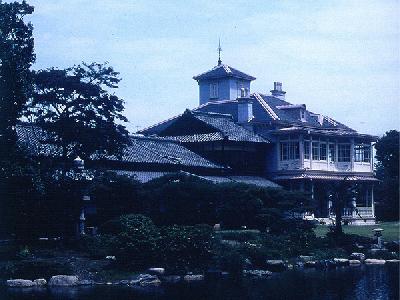|
Kanazawa still feels like a castle town. It is the site of a castle as well as many samurai houses. In addition, the romantic teahouse streets have not changed at all.
Nishi Teahouse Street is to the south of the Sai River, and is synonymous with Kanazawa. In the third year of the Bunsei period, the Kaga Domain had the street built along with Higashi Teahouse Street.
Even today, Japanese-style restaurants and geisha-girl delivery stores produce items of great elegance. After dark, the sounds of the shamisen can be heard, lending the streets further charm.
In olden times, most teahouses used to refuse first-time customers. This was the case with Higashi Street, but now there are Japanese-style hotels, souvenir shops and cafes lining its sides. It is most enjoyable to walk down the street.
Nishi Teahouse Museum is located in the building where Seijiro Shimada, a writer born in Mikawa, Ishikawa prefecture, lived when young and there are items exhibited here describing his early life.
Nishi Teahouse Street is to the south of the Sai River, and is synonymous with Kanazawa. In the third year of the Bunsei period, the Kaga Domain had the street built along with Higashi Teahouse Street.
Even today, Japanese-style restaurants and geisha-girl delivery stores produce items of great elegance. After dark, the sounds of the shamisen can be heard, lending the streets further charm.
In olden times, most teahouses used to refuse first-time customers. This was the case with Higashi Street, but now there are Japanese-style hotels, souvenir shops and cafes lining its sides. It is most enjoyable to walk down the street.
Nishi Teahouse Museum is located in the building where Seijiro Shimada, a writer born in Mikawa, Ishikawa prefecture, lived when young and there are items exhibited here describing his early life.
| [+ADDRESS] | 
|
















